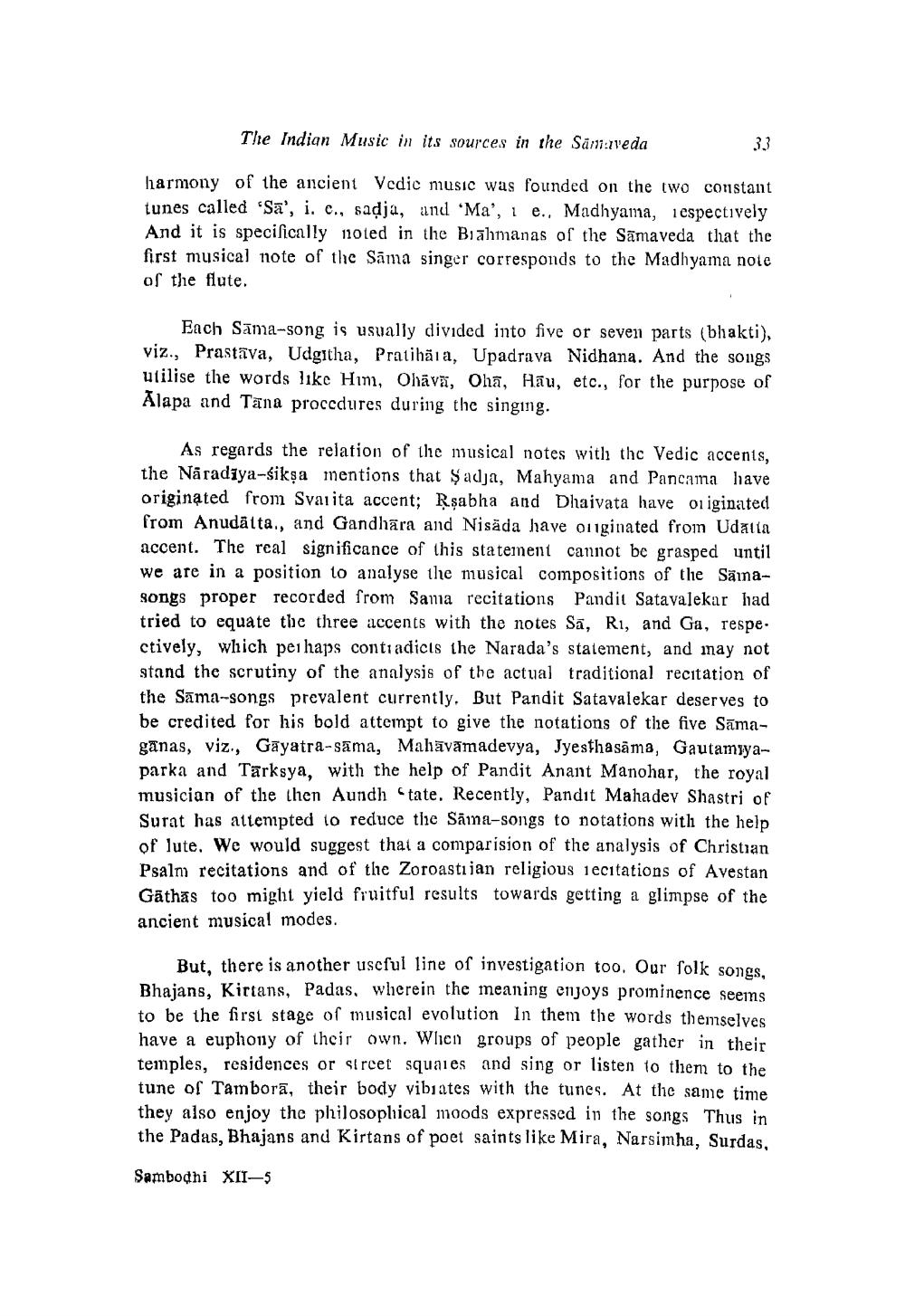________________
The Indian Music in its sources in the Sám:teda
harmony of the ancient Vedic music was founded on the two constant tunes called 'Sa', i. c., sadja, and 'Ma', 1 e., Madhyama, i espectively And it is specifically 110ted in the Biahmanas of the Sāmaveda that the first musical note of the Sāma singer corresponds to the Madhyama note of the flute.
Each Sāma-song is usually divided into five or seven parts (bhakti), viz., Prastāva, Udgitha, Pratihäia, Upadrava Nidhana. And the songs utilise the words like Him, Ohāvā, Oha, Hāu, etc., for the purpose of Alapa and Tana procedures during the singing.
As regards the relation of the musical notes with the Vedic accents, the Náradiya-sikșa mentions that Sadja, Mahyama and Pancama have originated from Svarita accent; Rşabha and Dhaivata have originated from Anudātta., and Gandhāra and Nisäda have oniginated froin Udatia accent. The real significance of this statement cannot be grasped until we are in a position to analyse the musical compositions of the Sämasongs proper recorded from Sama recitations Pandit Satavalekar had tried to equate the three accents with the notes Sã, Ri, and Ga, respectively, which per haps contradicts the Narada's statement, and may not stand the scrutiny of the analysis of the actual traditional recitation of the Sama-songs prevalent currently. But Pandit Satavalekar deserves to be credited for his bold attempt to give the notations of the five Sāmagānas, viz., Gayatra-sāma, Mahāvāmadevya, Jyesthasama, Gautamiyaparka and Tarksya, with the help of Pandit Anant Manohar, the royal musician of the then Aundh State. Recently, Pandit Mahadev Shastri of Surat has attenipted to reduce the Sāina-songs to notations with the help of lute. We would suggest that a comparision of the analysis of Christian Psalm recitations and of the Zoroastijan religious 1ecitations of Avestan Gāthas too might yield fruitful results towards getting a glimpse of the ancient musical modes.
But, there is another useful line of investigation too. Our folk songs, Bhajans, Kirtans, Padas, wherein the meaning enjoys prominence seems to be the first stage of musical evolution in them the words themselves have a euphony of their own. When groups of people gather in their temples, residences or street squares and sing or listen to them to the tune of Tamborā, their body vibjates with the tunes. At the same time they also enjoy the philosophical moods expressed in the songs Thus in the Padas, Bhajans and Kirtans of poet saints like Mira, Narsimha, Surdas,
Sambodhi XII-5




